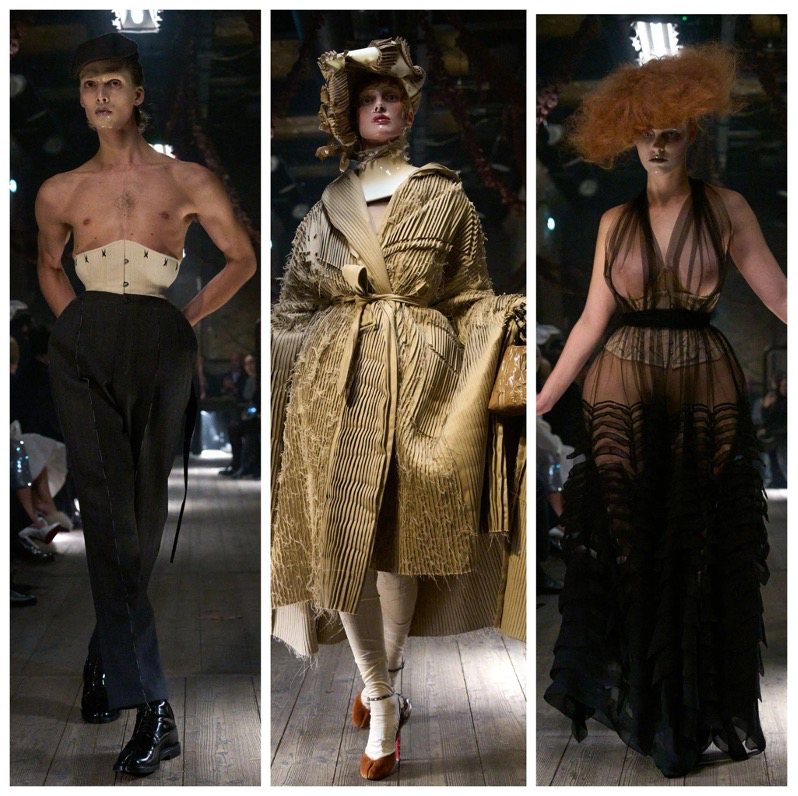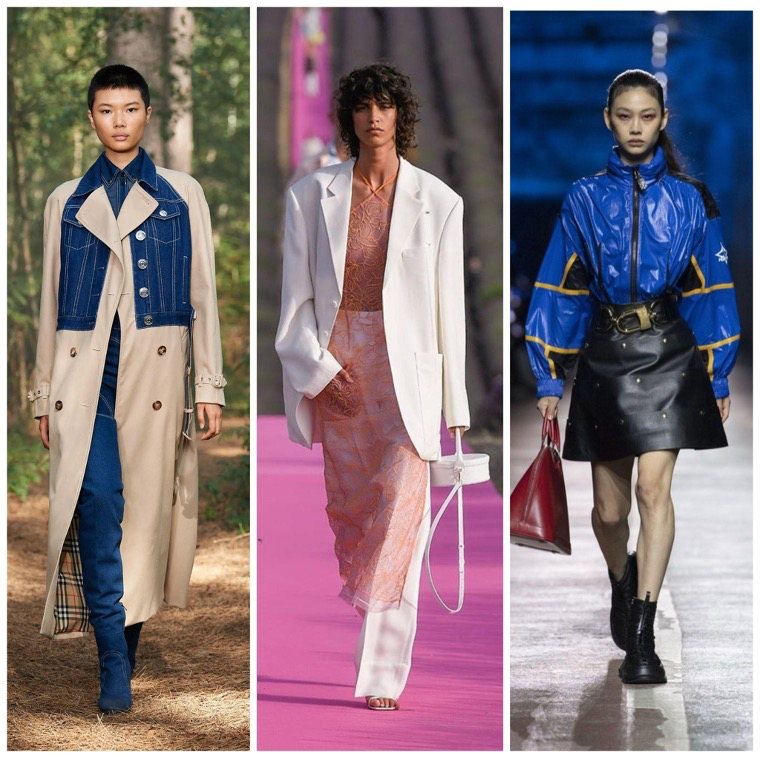The influence of fashion shows is a well-known catalyst for growth in the industry. After decades of work in the comm&creative crucibles of Milan and beyond, I have observed a formula that skillfully utilizes the spectacles to contribute to a brand's elevation and sales, every time. Let's break it down.
The economic significance of the global fashion market is undeniable. According to Euromonitor's latest insights, the overall market surged to an unprecedented value of 1.5 trillion USD in 2022, with the luxury fashion sector reaching approximately 123 billion USD.
In times of crises, however, the contraction of budgets often diminishes the pursuit of visibility. The onset of the pandemic in 2020 disrupted the fashion calendar, resulting in the cancellation or digitisation of numerous events. Data sourced from the Fashion Model Directory reveals a stark contrast between the years preceding Covid and the subsequent two years, showcasing a significant decline in the production of major fashion shows. This disruption, caused by the abrupt evaporation of financial resources, led to canceled orders, immobilized stocks, and plummeting sales, compelling companies to retreat and regroup.
In this landscape, fashion shows have emerged as a remarkably relevant tool for companies endeavoring to revitalize their brands, increase sales, and establish a formidable presence in the fiercely competitive market overshadowed by global uncertainties. Fashion shows have thus revealed themselves to serve as a potent means to achieve three objectives.
Fashion shows have a direct impact on sales. The anticipation generated by a meticulously executed runway presentation translates into heightened demand for the showcased collections, resulting in increased revenue. According to Forbes, after its Spring/Summer 2017 show, Louis Vuitton experienced a record 23% increase in sales.
The elevated brand awareness generated during the shows is also noteworthy. The spectacle of a fashion show, whether physical or virtual, serves as a powerful medium to capture the attention of both industry insiders and consumers. The visual and experiential nature of these events leaves a lasting imprint, fostering brand recall and distinction in a market teeming with choices. Maison Margiela Spring 2024 Couture show will remain engraved in our memory.
 (Maison Margiela Spring 2024 Couture show. Credits: vogue.com)
(Maison Margiela Spring 2024 Couture show. Credits: vogue.com)A strategic way of standing out in a saturated market, fashion shows provide a stage for brands to communicate their unique identity. They can convey a narrative that resonates with their target audience, particularly crucial as consumers seek authenticity and purpose in their purchasing decisions. Some brands know how to implement this tool in a spectacular way: in the light of a late Provencal summer day in 2019, designer Simon Porte-Jacquemus selected the iconic lavender fields of Valensole hills in France to commemorate his eponymous fashion house’s 10th anniversary.
In the aftermath of COVID-19, fashion shows serve as a symbol of resilience and adaptability. Brands embracing innovative approaches, such as virtual shows and hybrid formats, demonstrate their ability to evolve with an ever-changing normal. In 2020, online streaming platforms for fashion shows witnessed a 63% increase in viewership compared to the previous year. Burberry embraced this shift, reporting a 50% rise in online sales immediately following their digital show for its Spring 2021.
Fashion shows, with their international reach, provide a platform for brands to position themselves in key markets and attract attention from global buyers, a critical strategy as brands look to expand internationally amid challenges posed by geopolitical and economic uncertainties.
In the face of international tensions, fashion shows have become a form of cultural diplomacy. Brands that understand and embrace the cultural nuances of different regions through their runway presentations can harness soft power, fostering positive perceptions and building bridges across diverse markets. Louis Vuitton joined forces with the Korea Tourism Organization for its Pre-Fall 2023 women's collection showcase in Seoul. Meanwhile, Gucci unveiled its Cruise 2024 collection at Gyeongbokgung Palace, marking the beginning of a collaboration with the historical site’s conservation organization.
At the corporate level, once the "Why" is established, the focus shifts to empowering the "How." Planning a successful fashion show demands meticulous attention, foresight, creativity, and strategic thinking. The journey commences with defining the show's objective, whether it be rebranding the label, or establishing a presence in a new market. This sets the tone for the entire planning process.
 (Left to right: Burberry Spring 2021 show, Jacquemus Spring Summer 2020 show, Louis Vuitton Pre-Fall 2023 show. Credits: Vogue.com)
(Left to right: Burberry Spring 2021 show, Jacquemus Spring Summer 2020 show, Louis Vuitton Pre-Fall 2023 show. Credits: Vogue.com)If your brand is thinking of planning a show, these are the critical considerations in this process to include:
1. Audience: Understanding the target audience is paramount. Extensive market research helps identify trends, consumer preferences, and the competitive landscape, guiding decisions from collection design to show aesthetics to ensure resonance with the intended audience. Or just embrace the strong, recognizable, and one-of-a-kind style created by your designer. This sets your brand apart, catering to a niche and fostering a loyal customer base both at home and internationally. Rick Owens Fall 2024 Menswear Collection combined dark elegance, architectural innovation, and a willingness to challenge traditional fashion norms.
2. Budget: A clear budget, meticulously allocated, forms the backbone of a successful show. From venue selection to model casting, every aspect demands financial foresight. For early-stage brands, a catwalk show is a very major investment, although costs vary wildly. A modest show might cost 10.000€ to 50.000€, while the budgets for big luxury brands can run into the millions. New designers insist that catwalks matter hugely. They see debut shows as milestones for their brands and careers, as they are introducing the brand to a wider, potentially global audience. A slot on the official Fashion Week schedule is certainly a badge of honour, affirming a brand’s status within the industry.
3. Venue: The venue is the canvas on which the fashion story unfolds. Established brands often opt for iconic locations to align with their image, while emerging designers leverage unique spaces to create a buzz. The show's impact extends far beyond the venue in today's digital age. Live-streaming, social media engagement, and immediate online sales conversions are critical for leveraging the momentum gained. Crafting compelling narratives for press releases and engaging with influencers ensure sustained coverage. In essence, planning a fashion show is a journey that begins with a vision and unfolds through careful orchestration.
However, possessing a compelling collection, the right stylist, a perfect venue, and an adequate budget are insufficient. Without proper company organization and culture, fashion shows can become a formidable challenge for every department, exerting excessive pressure on key areas. At Reflex, we have experience in event organization and show production, specializing in supporting companies' internal auditing and reorganization to prepare them for the delicate process of executing a successful show.
1. Carefully evaluate the design team's size. Consider adding new resources to ensure comprehensive coverage for collection styling. Bringing in experts elevates the creative aspect, ensuring each collection aligns with brand identity and tells a compelling narrative on the runway.
2. Strengthen the marketing team. Integrate an event producer with expertise in fashion show management, ensuring seamless orchestration, efficient coordination with designers, and effective promotion leading up to and during the fashion show, or hire Reflex to take charge of this task.
3. Elevate the skills of the product management team. Refine the process of translating runway collections into marketable products, ensuring alignment between the creative vision presented on the runway and market demand.
Additionally, attention should be paid to the way departments interact and collaborate:
4. Establish a collaborative culture. Foster communication and synergy among finance, marketing, design, and sourcing departments. Regular cross-functional meetings facilitate shared insights and ensure each department is aligned with the overarching goals of the fashion show.
5. Conduct integrated planning workshops. Involve representatives from each department to discuss and integrate financial considerations, marketing strategies, design aesthetics, and sourcing feasibility into a cohesive plan.
6. Implement cross-functional training programs. Enhance the understanding of each department's role in the fashion show process, fostering a sense of shared responsibility and promoting a unified approach to successful execution.
7. Develop shared KPIs. Emphasize the interconnectedness of each team's contributions, ensuring success metrics are aligned with the holistic goals of the fashion show, fostering a culture of mutual accountability and achievement.
Through my years of experience, I've witnessed the transformative power of a fashion show firsthand. It's not just about unveiling a new collection or meeting certain objectives; it's about igniting a fire that propels your brand to new heights! Picture this: a meticulously planned event where every detail, from the stunning prototypes to the expertise of your team, seamlessly comes together in a symphony of creativity, craftsmanship, and business acumen.
There's a moment when everything aligns perfectly: when the passion of your designers meets the dedication of your dressmakers, when your sales team is primed and ready to conquer, as every department works in harmony towards a common goal. This is the moment when your company radiates strength and confidence, ready to take center stage and captivate the world.
At Reflex, we live for these moments of triumph. We're not just here to facilitate a fashion show; we're here to elevate your brand, to amplify your message, and to celebrate your success.